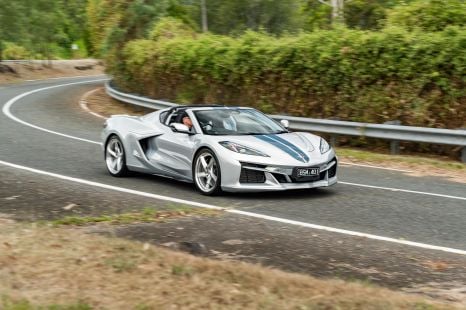

CarExpert.com.au
The CarExpert team's favourite cars of 2025
7 Hours Ago
Jeep has improved the iconic Wrangler in areas that matter, but is it enough to lure in new buyers outside its loyal fan base?
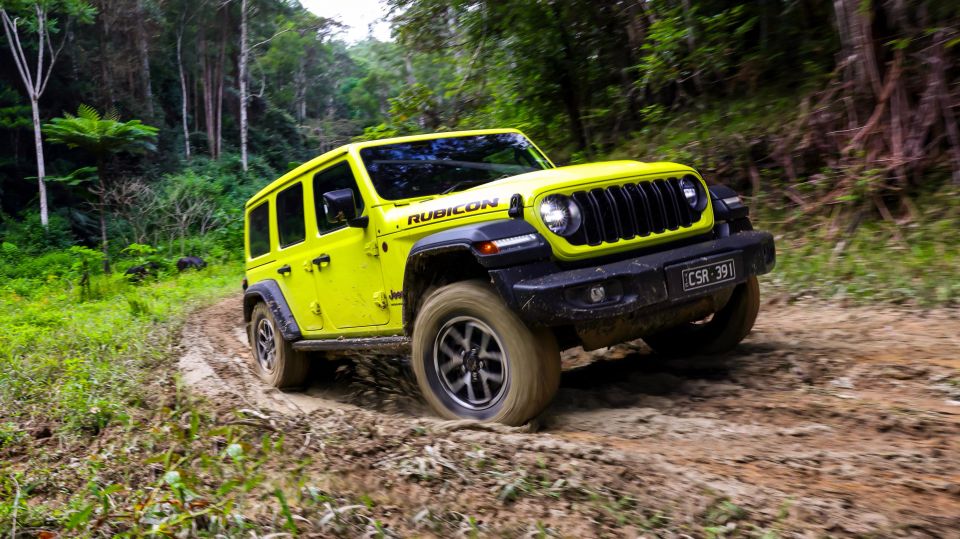
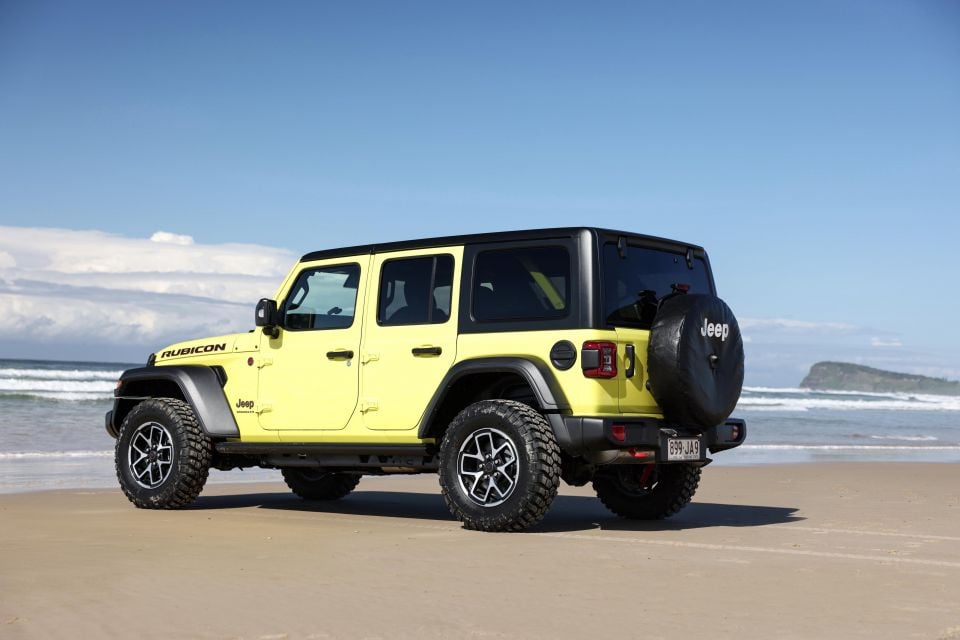

Where expert car reviews meet expert car buying – CarExpert gives you trusted advice, personalised service and real savings on your next new car.
The Jeep Wrangler has long been known for its boxy shape and off-road capability – on-road manners? Not so much.

After all, it was inspired by the military Jeeps of the 1940s, which favoured utility over comfort.
You need a bit of both in 2024. Buyers gravitate to the Wrangler for its appearance, but the market also demands a 4×4 that can offer those same lifestyle benefits without the compromises traditionally associated with the nameplate.
It’s no surprise that Jeep has thrown interior and aesthetic upgrades at the updated Wrangler, but this is more than just a nip-and-tuck. It also gets a new four-cylinder turbo engine across the range, spelling the death of the venerable Pentastar V6 engine.
Jeep has even cut prices, to the tune of up to $5500 for 2024. So, is the 2024 Wrangler finally an off-road beast with a street-smart alter ego to match, or is it still a niche gem suited to weekend adventurers?
Bucking the trend of price increases across the car industry, the 2024 Jeep Wrangler range has actually become cheaper.
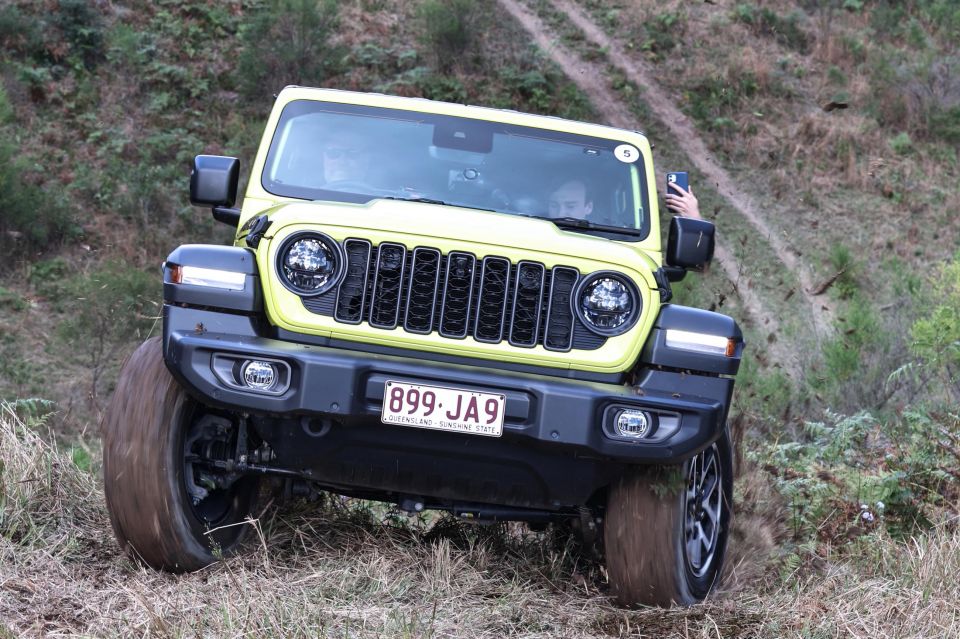
The base variant has received a $5500 cut, the Overland is $2000 more affordable, and the flagship Rubicon goes into 2024 with an unchanged price tag.
| Model Variant | Pricing |
|---|---|
| 2024 Jeep Wrangler Unlimited Sport S | $75,950 |
| 2024 Jeep Wrangler Unlimited Overland | $84,950 |
| 2024 Jeep Wrangler Rubicon | $83,950 |
| 2024 Jeep Wrangler Unlimited Rubicon | $90,450 |
Prices exclude on-road costs
To see how the Jeep Wrangler lines up against the competition, check out our comparison tool.
Buy your new car without the stress. It's fast, simple and completely free.

Great service from Travis and team, second time I have used this business would not hesitate to recommend them to anyone
Craig C.
Purchased a Ford Ranger in Sunshine Coast, QLD
CarExpert helped Craig save thousands on his Ford Ranger, now let us save you on your next new car.
Find a dealChoice comfort and tech upgrades headline the interior of the updated Wrangler, which is otherwise similar in layout to pre-update models.
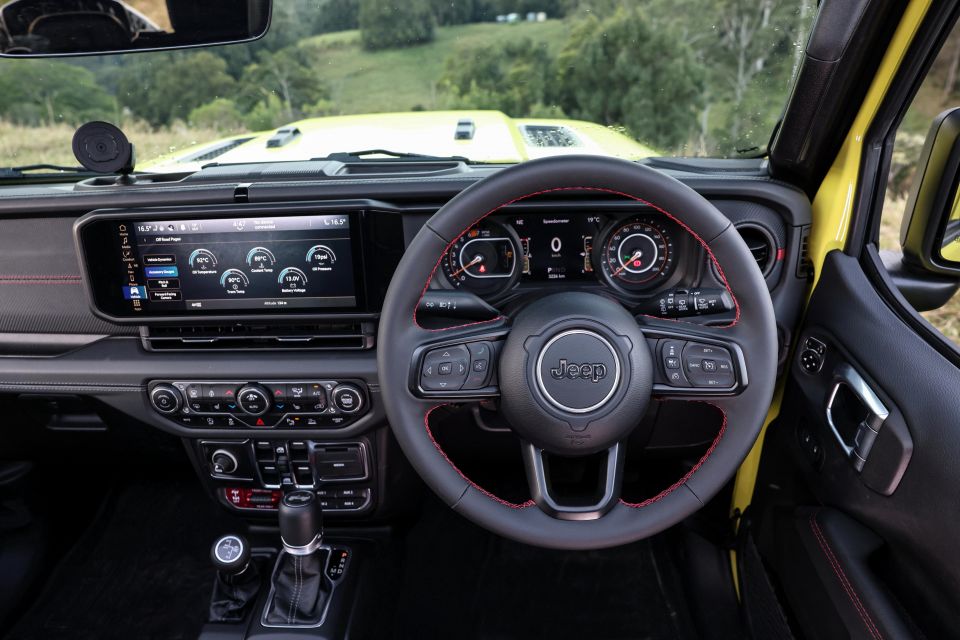
You sit high and upright in the power adjustable front seats, which are now trimmed in black Nappa leather for the Rubicon. Front seat heating comes as standard on all variants, which undoubtedly gets a workout on winter camping trips.
An injection of luxury helps to justify the Rubicon’s $90,000 before on-roads price tag, but the removable roof looks a bit tinny from the inside. Although the comfy chairs prop you up, it’s still an intimidating view over the long bonnet to the front of the Wrangler, which can be hard to place at times.
The physical controls consist of meaty buttons and switches spread between the steering wheel, dash and centre tunnel, all of which are straightforward – aside from the window switches which are located under the climate controls.
I was caught out reaching for non-existent switches on the doors several times, but I’m sure you’d get used to it. For those playing at home, the central window switches facilitate the removable doors which are a Wrangler non-negotiable.
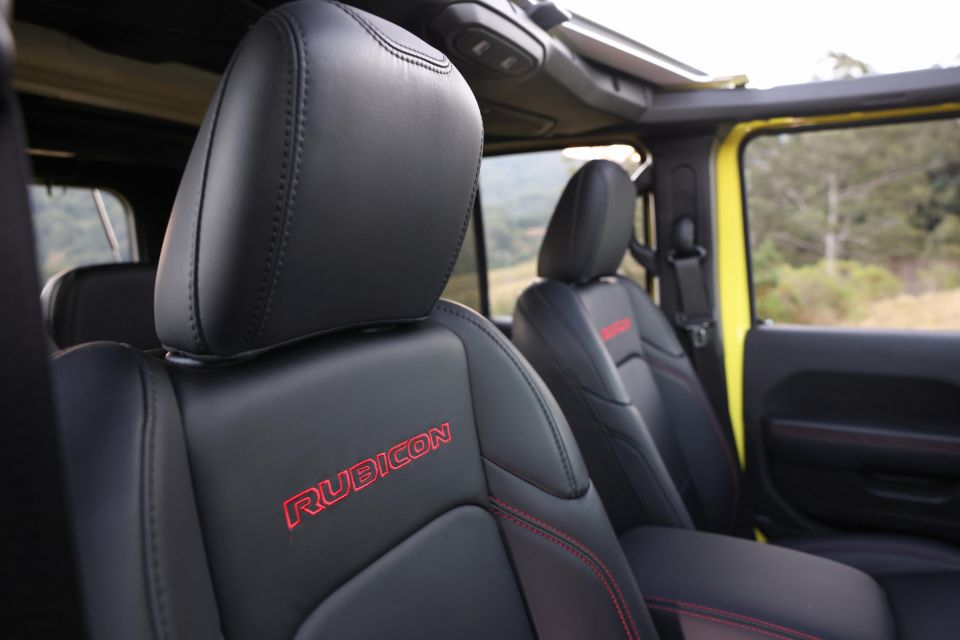
Analogue gauges behind the steering wheel contribute to the old-school-cool aesthetic, but you don’t have to look far for a giveaway that this is a 2024-spec example.
Taking pride of place on top of the dash is a new 12.3-inch touchscreen running Jeep’s Uconnect 5 system. Jeep claims it’s five times faster than the previous unit, and there’s customisation aplenty.
Up to five drivers can create their own user profile with preferences for seat position, mirror angles, and climate comfort, just to name a few. Smartphone mirroring no longer requires a wired connection, so it’s easy to hook up your phone on the fly.
Compared to the previous 8.0-inch infotainment display, the new screen brings Jeep in line with more expensive competitors… and goes beyond with the incorporation of off-road features such as the forward-facing TrailCam.

US buyers can access detailed guides to popular driving trails via the touchscreen, although Australia hasn’t been treated to similar functionality.
While a significant improvement, the screen isn’t perfect. Like an iPhone brightness adjusts automatically based on light levels in the cabin, and the screen flicks between ‘light’ and ‘dark’ modes. This feature was too sensitive throughout our test flicking between the two modes, which was distracting as a driver.
Storage is limited to small cupholders between the the front seats and a large cubby under the centre armrest. The removable doors are fitted with nets to secure small items. As such, buyers might find the Wrangler strapped for space in two-door guise – on the other hand, Unlimited variants have more room to offer.
Four-door versions gain an extra 548mm in wheelbase, which benefits second row passengers significantly.

Headroom will never be an issue in any Wrangler due to its tall frame, but legroom is also plentiful in the four-door model. There’s no shortage of features, either – rear air vents, window switches, USB-A and USB-C outlets, and a 230V AC outlet are all incorporated into the back of the centre console.
ISOFIX child seats fit comfortably on the outboard benches, and the 2024 update introduces second row curtain airbags to protect rear passengers in the event of an accident.
It’s a different story when it comes to packing the family into a two-door Rubicon. It’s difficult to clamber into the back between the seat and door frame, and once you’re seated there’s considerably less legroom. It’s not a worthwhile compromise if you plan on using the second row regularly.
Further back, the four-door offers 987L of boot space in five-seat configuration, which expands to 2050L with the seats folded down.
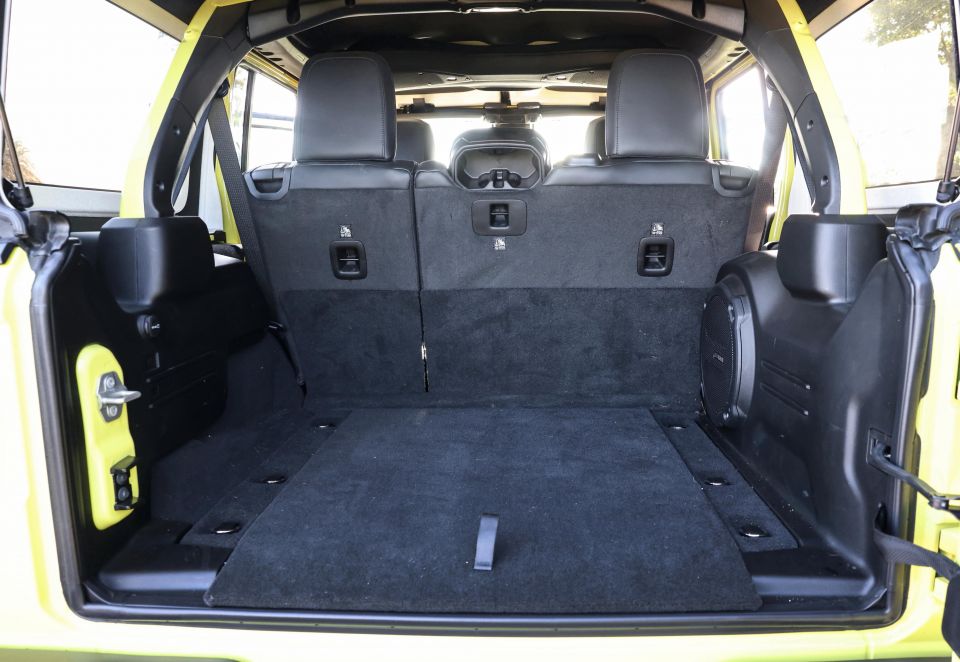
The shorter wheelbase of the two-door also reduces storage space in the boot. Jeep hasn’t offered an official figure but the space is more comparable to a city hatchback than a family SUV.
The boxy rear section of the Wrangler makes it easy to play Tetris with your suitcases, or more likely tents and fishing gear. Accessing the boot isn’t as easy as it is to cram your stuff in.
The tailgate is split into two sections – a lower door, and a glass hatch that opens upwards, completed in that order. A full-size spare is mounted to the door, so it’s on the heavier side, and the whole process requires a bit of effort.
But what’s a Wrangler without compromise, right?
| Dimensions | Jeep Wrangler Unlimited Rubicon |
|---|---|
| Length | 4882mm |
| Width | 1894mm |
| Height | 1901mm |
| Wheelbase | 3008mm |
| Tare mass | 2139kg |
| Gross Vehicle Mass (GVM) | 2579kg |
The Jeep Wrangler is no longer exclusively powered by the dated naturally aspirated Pentastar V6 petrol engine, instead adopting a turbocharged 2.0-litre four-cylinder petrol engine.
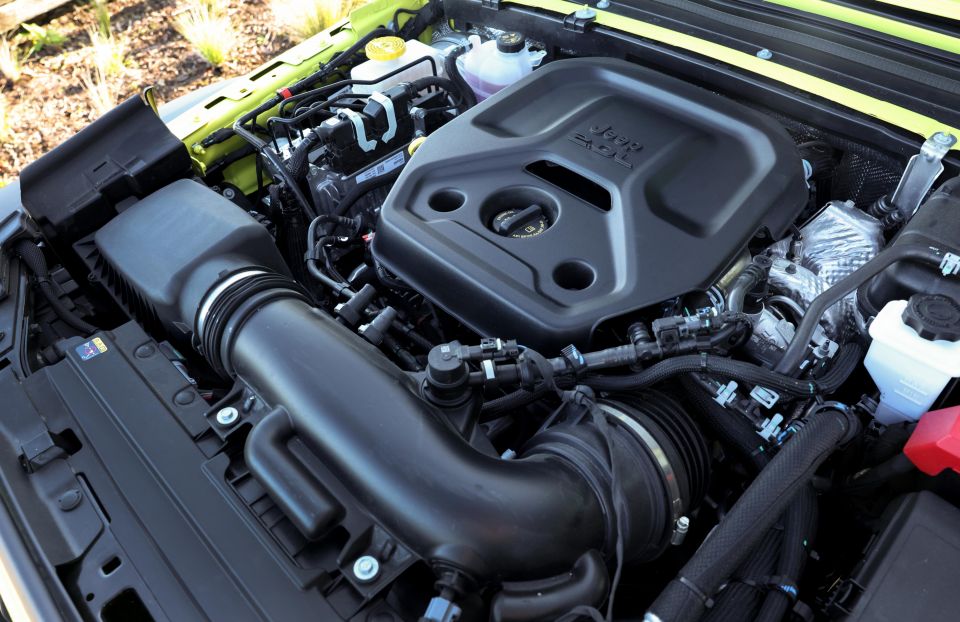
The new engine produces 9kW less but 53Nm more than its V6 predecessor, and is mated to an eight-speed automatic transmission.
The Jeep Wrangler S and Overland are equipped with a Selec-Trac 4×4 System that can automatically transition between two- and four-wheel drive.
Rubicon grades gain a Rock-Trac 4×4 system, adding a 4:1 low-gear ratio, a 77.2:1 crawl ratio, Tru-Lok electronic locking front and rear differentials, and an electronic front sway bar disconnect.
| Model | Jeep Wrangler Unlimited Rubicon |
|---|---|
| Engine | 2.0L 4cyl turbo |
| Power | 200kW |
| Torque | 430Nm |
| Transmission | 8-speed automatic |
| Driven wheels | 4X4 dual range |
| Weight | 2139kg (tare) |
| Fuel economy (claim) | 9.9L/100km |
| Fuel tank size | 81L |
| Fuel requirement | 95 RON |
| CO2 emissions | 225g /km |
| Maximum towing capacity | 2495kg – braked |
To see how the Jeep Wrangler lines up against the competition, check out our comparison tool.
Jeep has aimed to make the rough-and-ready Wrangler easier to live with on daily basis with the 2024 update, and that’s noticeable when you put it on public roads.
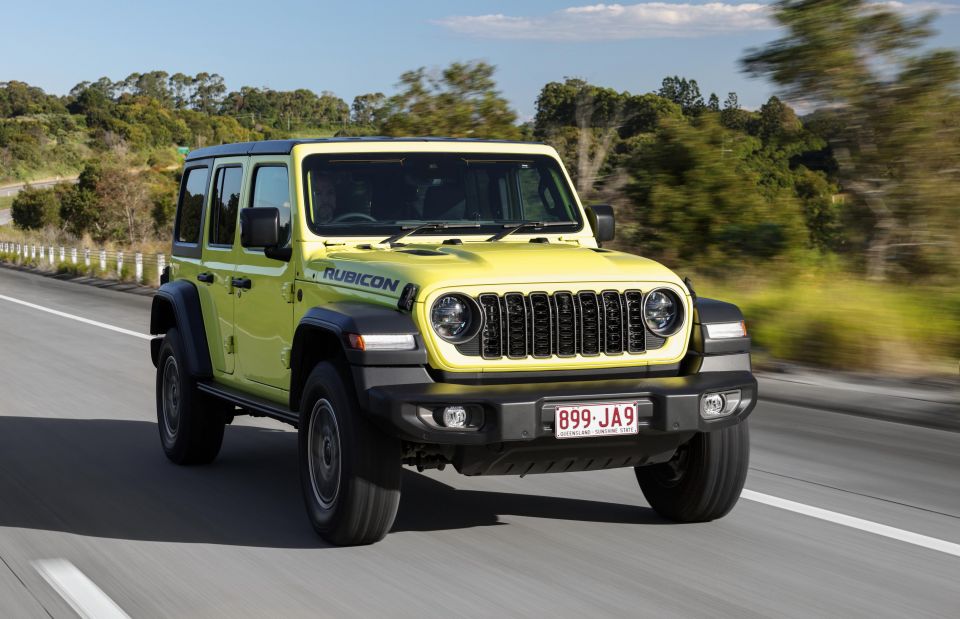
It’s no secret previous iterations were considered a bit of a handful on sealed tarmac compared to other modern SUVs, and while the updated model possesses many similar characteristics, palpable improvements have been made.
The improved driving experience is mostly a product of the 2.0-litre turbocharged four-cylinder engine that now powers all variants of the Wrangler.
It’s a better motor than the old, naturally aspirated Pentastar V6 in just about every way. You get 53Nm more torque, superior fuel economy and importantly, a whole lot less noise.
Where the V6 made its presence known inside the cabin, the turbo four goes about its business quietly so you can converse with passengers without raising your voice.
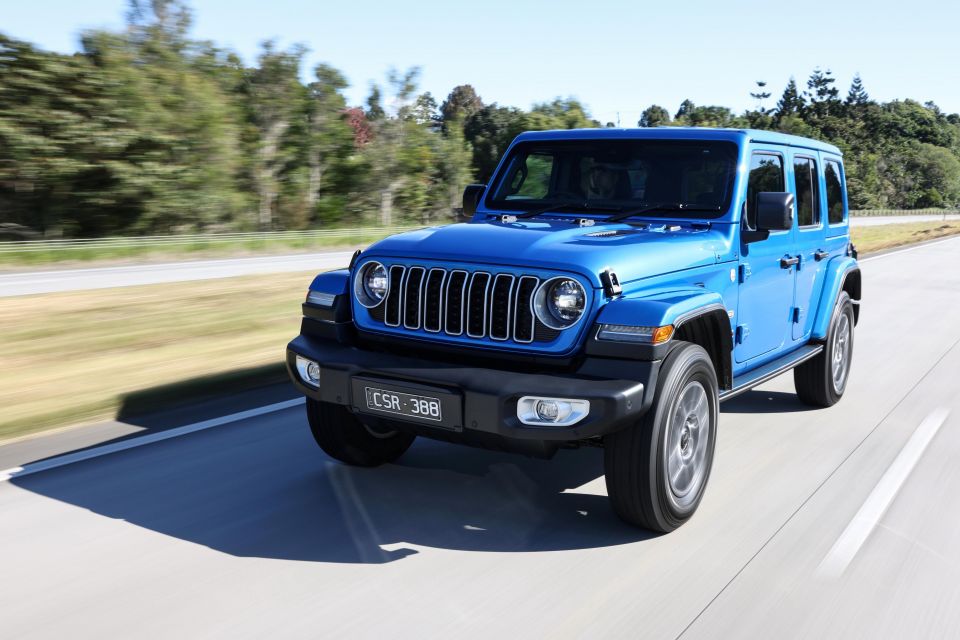
The addition of forced induction is also a winner around town, as the new Wrangler has more punch down low when changing lanes in heavy traffic or taking off from a standing start at the traffic lights.
It also rides better than I expected, with a soft setup that feels slightly bouncy. There’s no hiding the fact this is a rugged off-roader at heart, though. The 32-inch off-road tyres equipped to our Rubicon tester transmit high levels of road noise into the car, which offsets the refinement gains made by the new engine.
Of course, a boxy SUV with removable roof panels and doors is never going to set the standard for refinement, but it’s something that can’t be ignored if you plan to hit the highway regularly. Most unibody rivals shade the Wrangler in this regard.
Don’t expect the Wrangler to offer too much of a helping hand from a cruising perspective either, as there’s no lane-keep or lane-centring assistance to keep you on the straight and narrow. At least cruise control is adaptive, and it operates smoothly although you’re forced to re-engage the system after coming to a stop in a traffic jam.

In typical Wrangler fashion there’s no dead pedal for the driver to rest their left foot, which continues to be a strange omission that compromises comfort. You’re forced to either sit bolt upright or wedge your foot against the transmission tunnel.
Twisty roads brought another issue to the fore. Steering inputs through corners were met with vague responses from the front end of the car, which undermined my confidence while driving.
However, that confidence returned in spades when we left the blacktop for paths less travelled. When the going gets tough, the Wrangler gets going.
Not a whole lot has changed from an equipment perspective, but the Wrangler was already an accomplished off-road package.
The Wrangler has 2H, 4A (for AWD on sealed surfaces), 4H (for unsealed surfaces), and 4L modes for its selectable four-wheel drive system, and was able to conquer every challenge we threw at it from steep stopes to slippery mud and loose gravel.
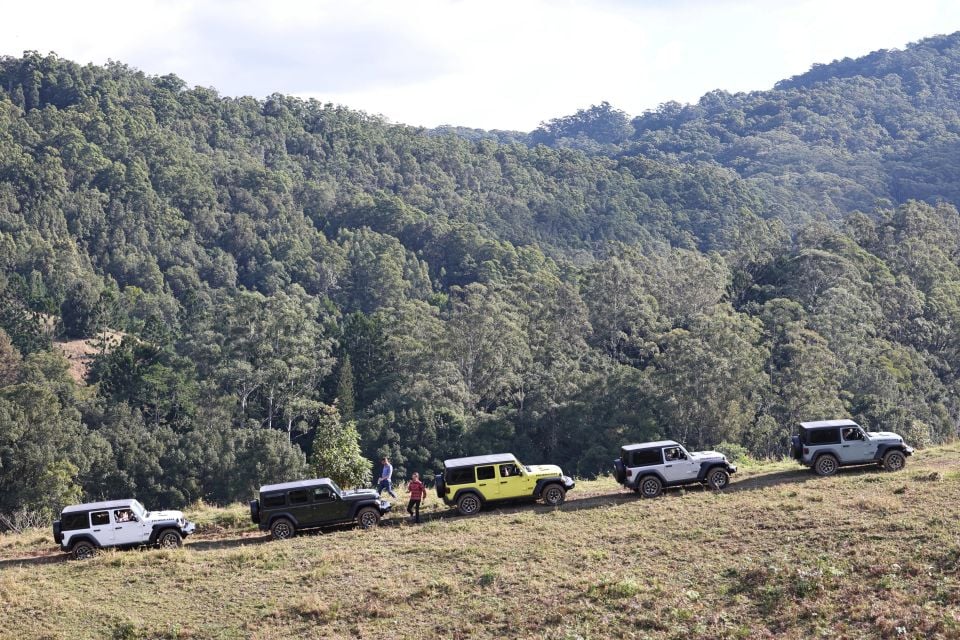
When the declines get especially hairy, Hill Descent Control (HDC) is on hand to ease you down safely. Once you set a speed, which is easily done in 0.5km/h increments via the gear lever, the Wrangler will maintain steady momentum without any brake pedal inputs from the driver.
Rubicon models also come standard with locking front and rear differentials, as well as an electronic front sway bar disconnect.
Ground clearance in the four-door Rubicon is 255mm, while the approach, departure and breakover angles are quoted at 43.9, 37.0 and 22.6 degrees respectively. Jeep also quotes a wading depth of 760mm across the range.
Don’t worry too much about getting wet, as the controls for the powered front seats are now waterproof.
New for the 2024 Rubicon is a standard front TrailCam – a high-resolution forward facing camera that spots any obstacles ahead before the naked eye could.
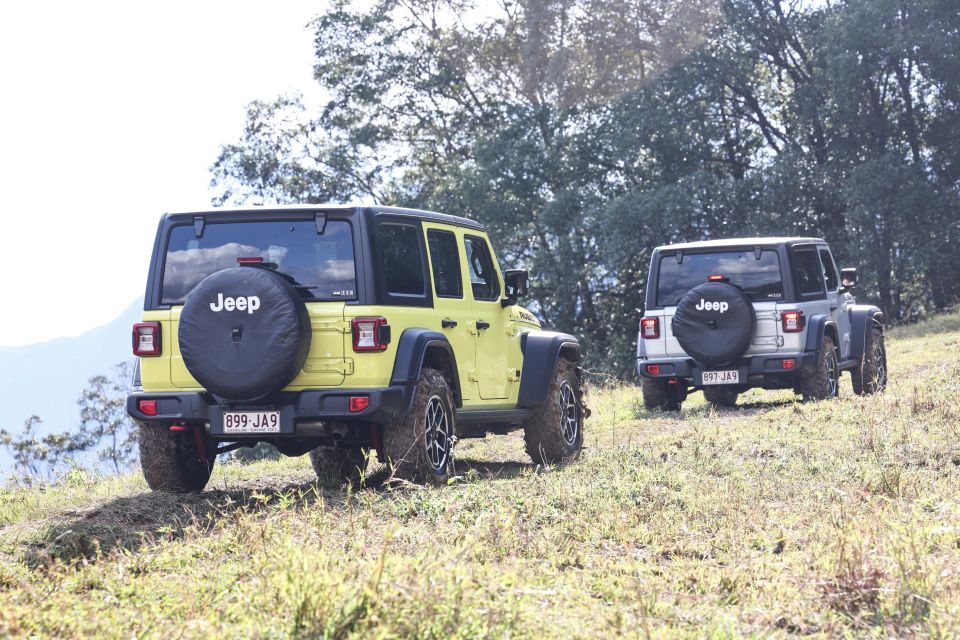
Where expert car reviews meet expert car buying – CarExpert gives you trusted advice, personalised service and real savings on your next new car.
It’s especially useful when travelling alone, or if your adventure partner would rather stay seated than act as a spotter outside the vehicle.
Instead of constantly peering over the bonnet, I used the TrailCam to scout the path ahead and made quicker progress as a result – though unfortunately, you can’t option it for Sport S and Overland variants.
Thanks to new-age technology and fit-for-purpose engineering the Wrangler never feels out of its depth, and it’s capable of feats that most similarly priced 4x4s could only dream of.
And it’s easy. Once setup correctly, you can let the car do most of the work – just know your limits as a driver.
There are three Wrangler trim levels available – Sport S, Overland and Rubicon.
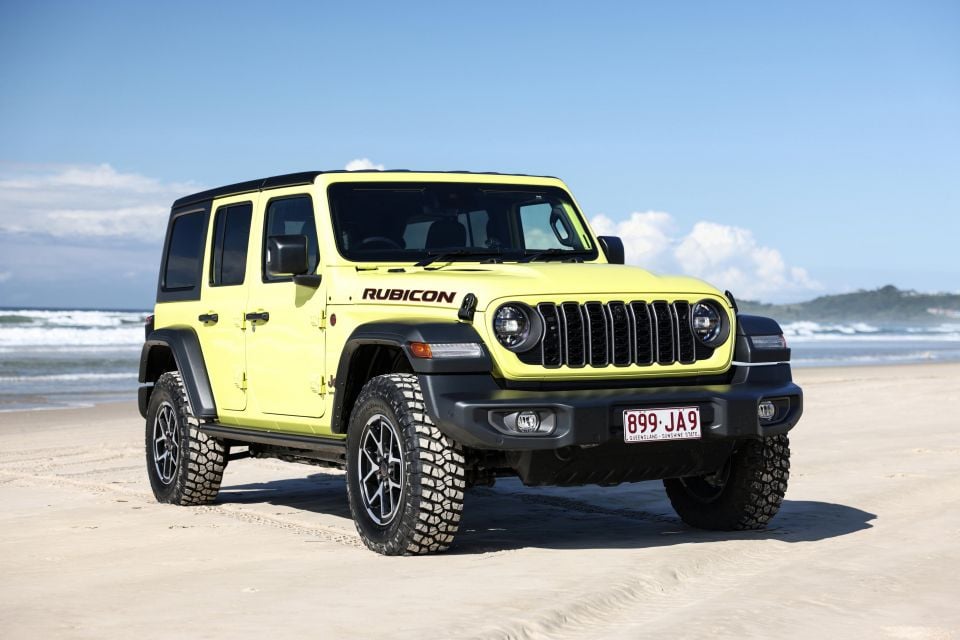
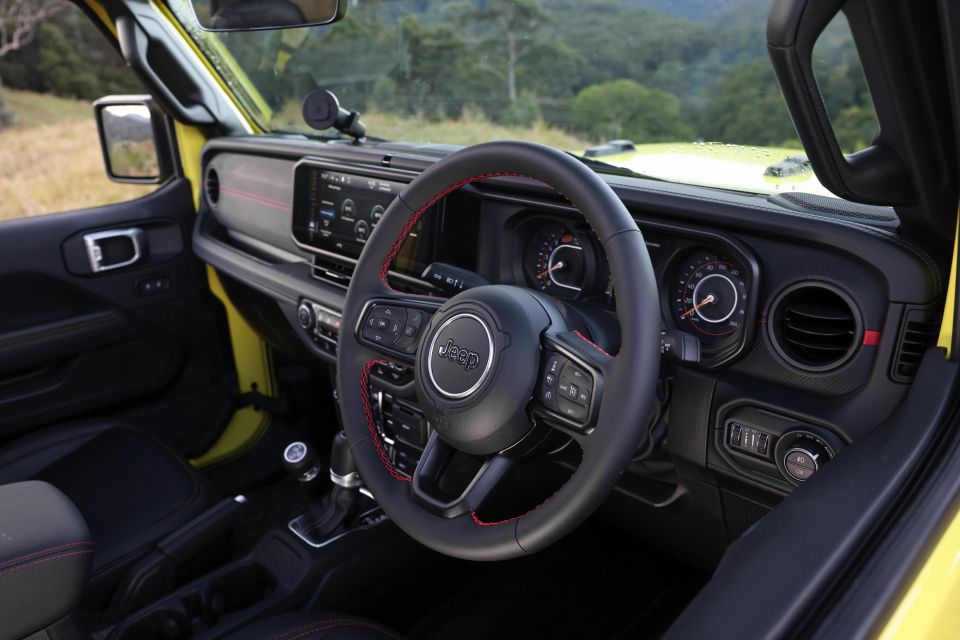

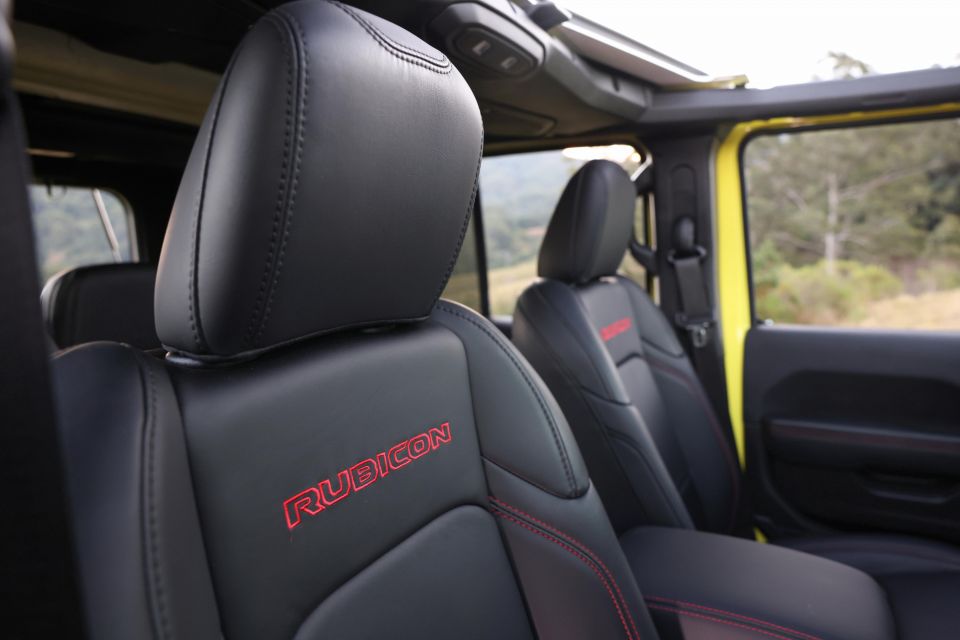
Wrangler Sport S standard equipment:
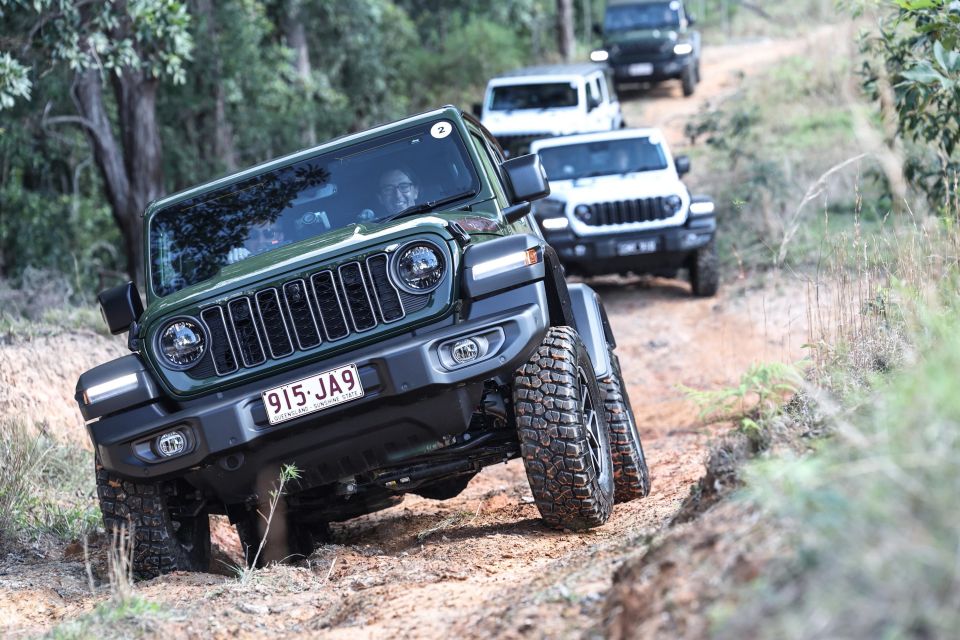
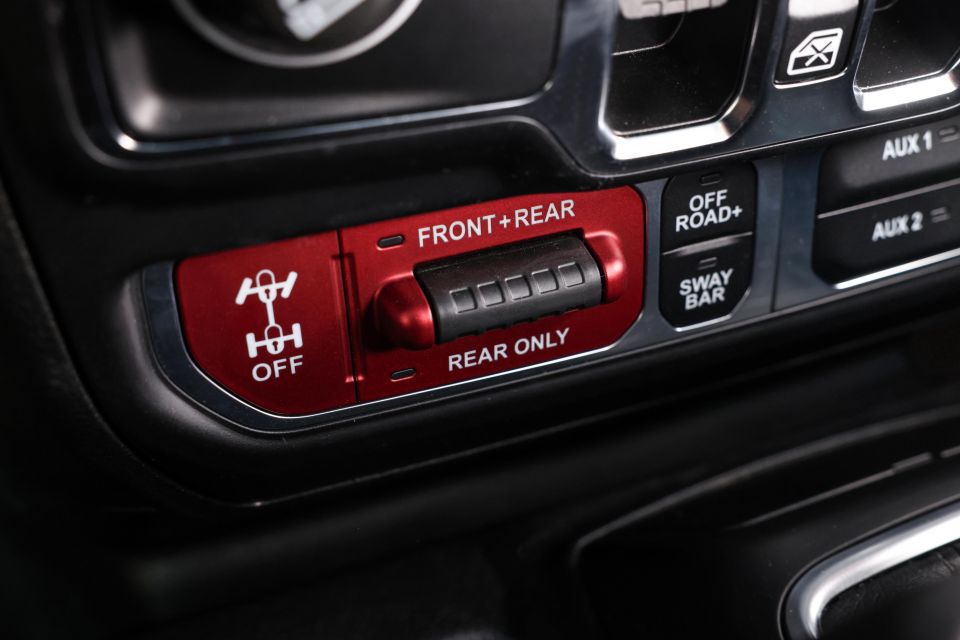
Wrangler Overland adds:
Wrangler Rubicon adds:
Options:
The updated 2024 Jeep Wrangler is untested by ANCAP, though the pre-update was awarded a three-star safety rating in 2019 based on Euro NCAP testing which included the 2.0-litre turbo engine.
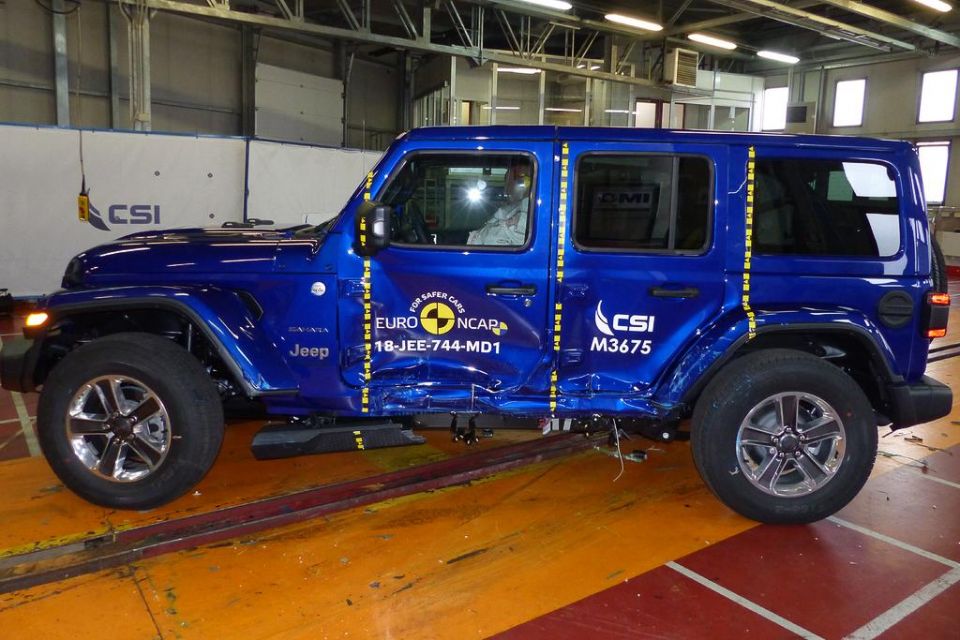
Jeep told media it doesn’t plan to retest the Wrangler when its current rating expires in 2025.
It scored 60 per cent for adult occupant protection, 80 per cent for child occupant protection, 49 per cent for vulnerable road user protection, and 51 per cent for safety assist.
Standard safety equipment includes:
The updated Wrangler is covered by Jeep’s five-year, 100,000-kilometre warranty. The brand also offers five years of capped-price servicing and lifetime roadside assistance provided the vehicle is serviced through an official Jeep dealer.
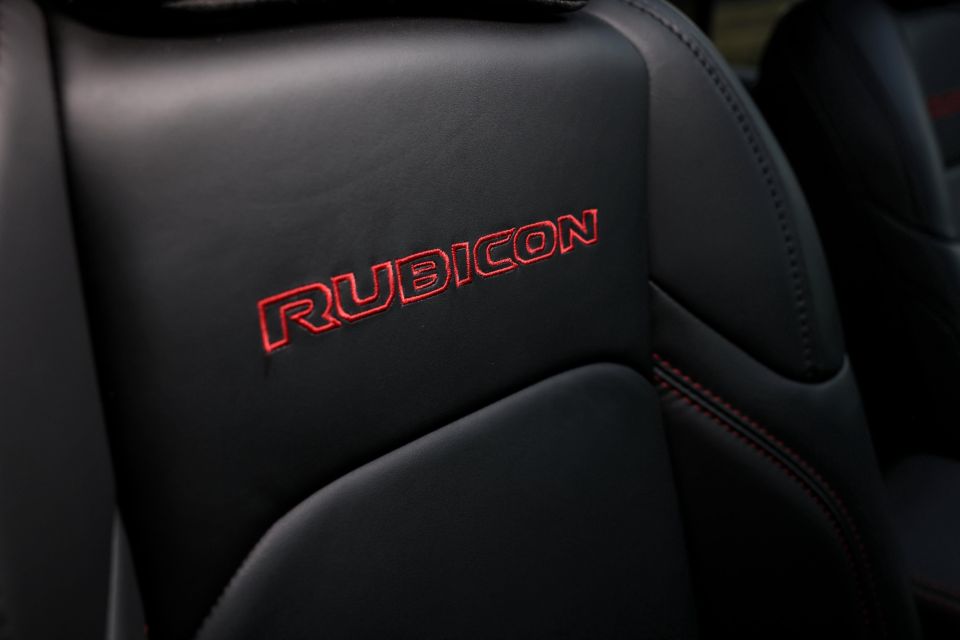
2024 Jeep Wrangler service pricing:
| Interval | Price |
|---|---|
| 12mth/12,000km | $399 |
| 24mth/24,000km | $399 |
| 36mth/36,000km | $399 |
| 48mth/48,000km | $399 |
| 60mth/60,000km | $399 |
| Total: | $1995 |
This 2024 update represents a push to bridge the gap between the off-road-ready Wranglers of years gone by and the popular retro-styled luxury SUVs of today.
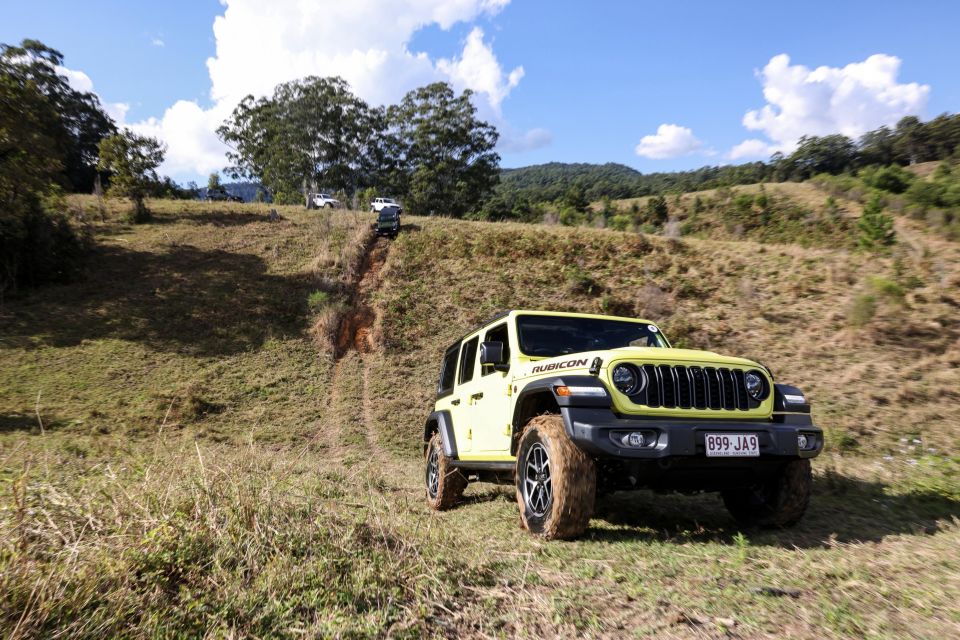
A timely engine update has brought a smoother, quieter feel to the Wrangler driving experience, and it hasn’t lost any of its off-road magic.
Improvements to interior tech and comfort are also steps in the right direction if Jeep wants to lure in buyers who won’t take their 4×4 beyond the suburbs, but the lack of key safety features doesn’t support that narrative.
Furthermore, the Wrangler still occupies an awkward position in the SUV market.
Sure, you’ll struggle to find a similarly priced alternative that beats the Jeep for off-road capability, but there are several options with broader skill sets.
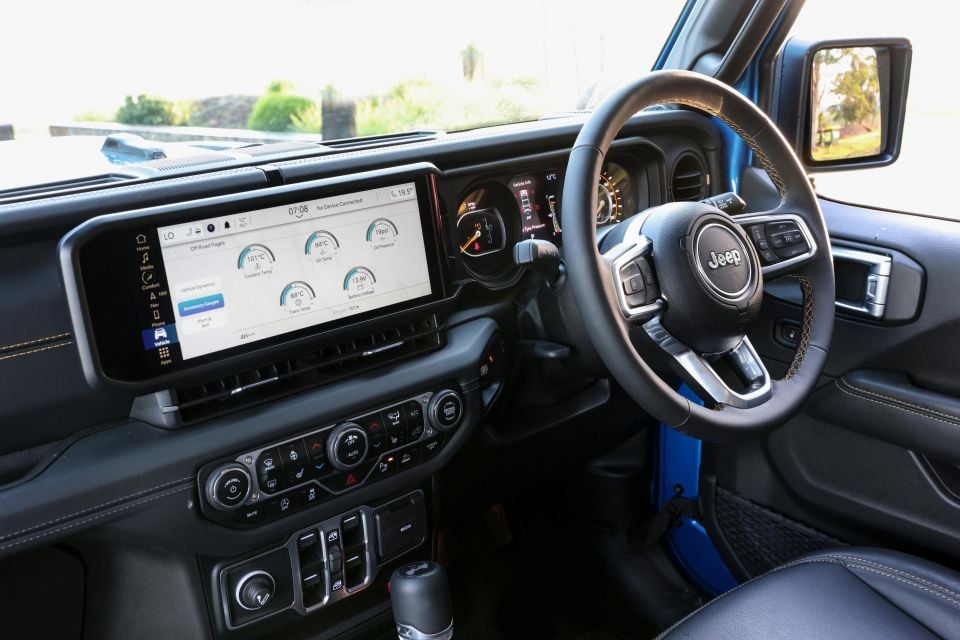
The Land Rover Defender carries similar pedigree to the Wrangler and has a more luxurious interior, while the Suzuki Jimny and GWM Tank 300 offer boxy retro looks and off-road chops at a fraction of the price.
That’s not to mention the Ford Everest, Toyota Prado, GWM Tank 500 and Nissan Patrol that can also be had for Wrangler money – none of them come in pink, though.
And perhaps that’s the best way to summarise the Wrangler – it’s not the sensible choice, but if you’re not afraid to be different and love waking up under different stars every weekend, you’ll probably buy one anyway.
If that’s the case get the full-fat Rubicon Unlimited with all its rugged goodies, and make it Tuscadero pink… or High Velocity yellow.
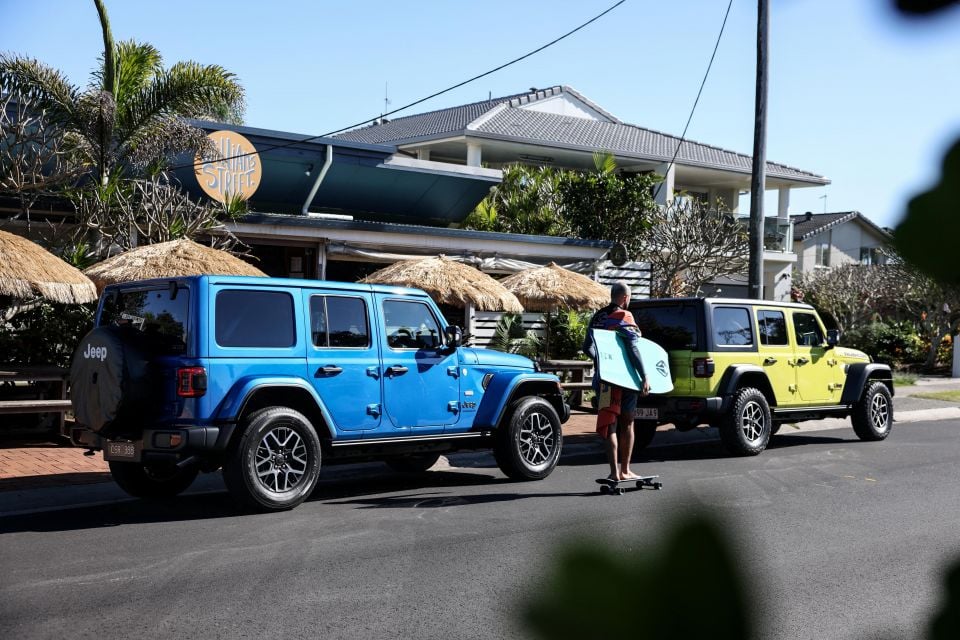
Click the images for the full gallery
MORE: Buy a Jeep Wrangler MORE: Everything Jeep Wrangler
Where expert car reviews meet expert car buying – CarExpert gives you trusted advice, personalised service and real savings on your next new car.
Josh Nevett is an automotive journalist covering news and reviews, with a background in motorsport journalism.


CarExpert.com.au
7 Hours Ago
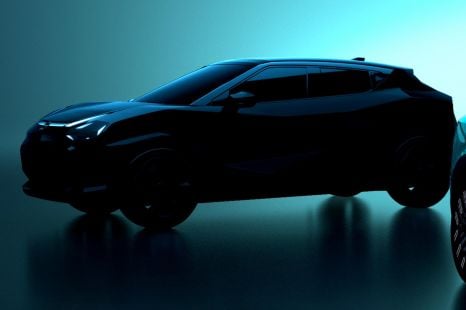

Damion Smy
21 Hours Ago
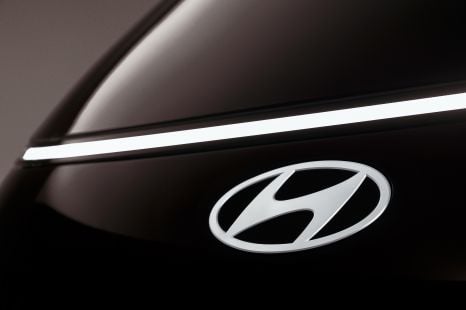

Damion Smy
24 Hours Ago
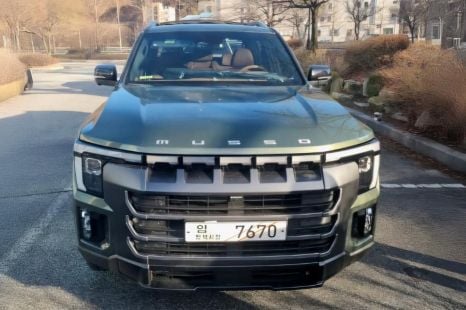

Damion Smy
1 Day Ago
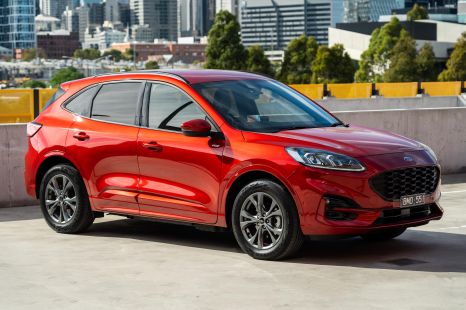

Damion Smy
1 Day Ago
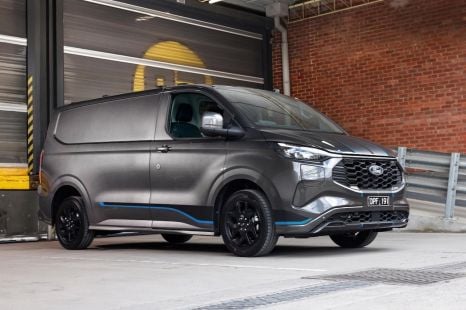

Damion Smy
1 Day Ago